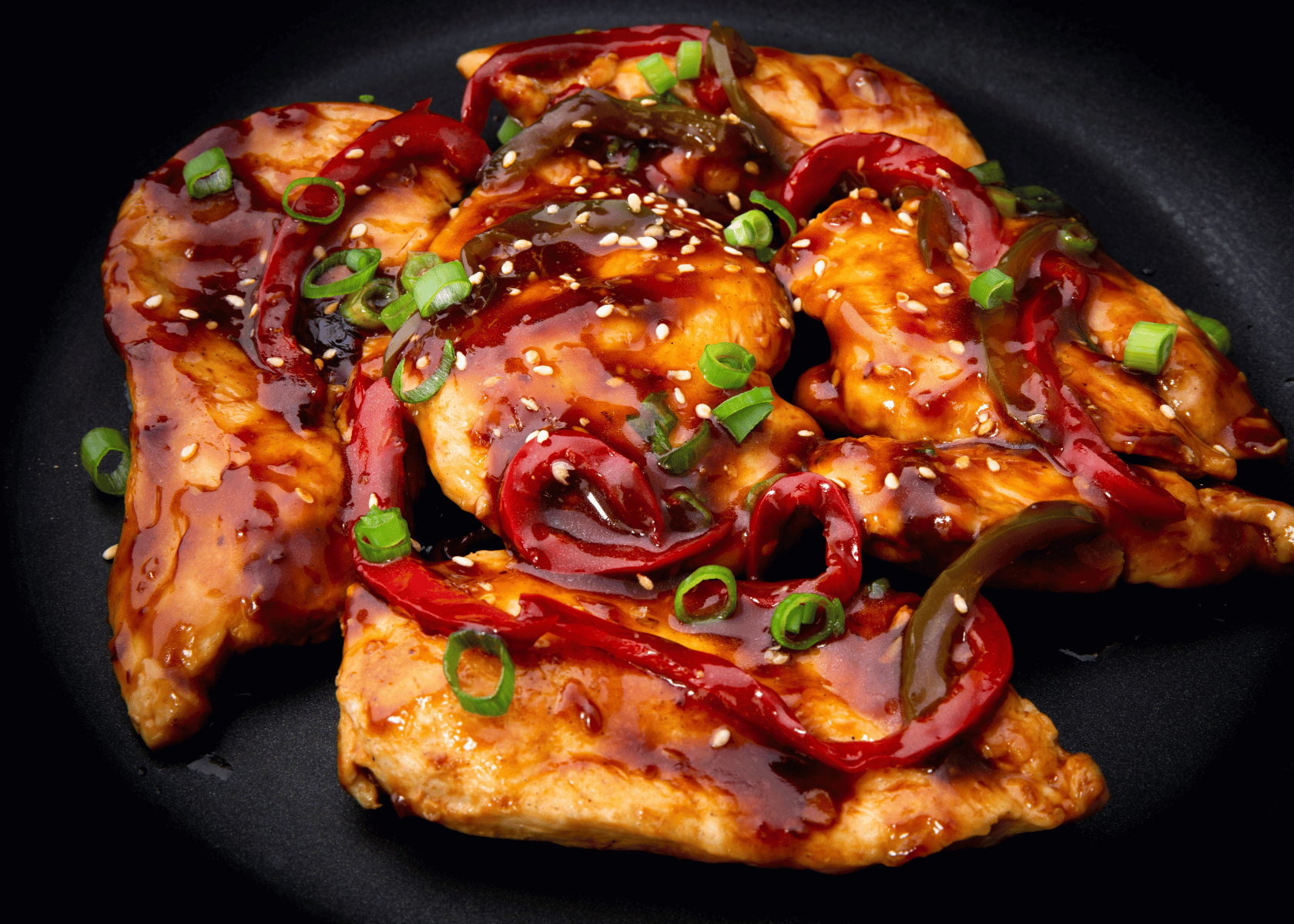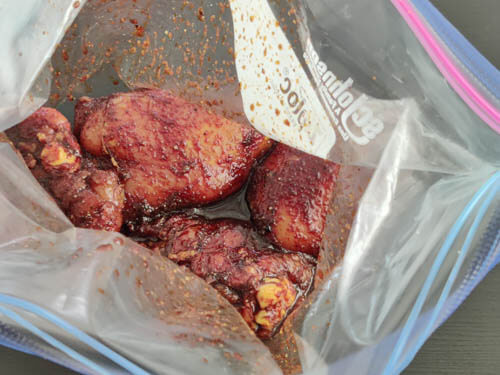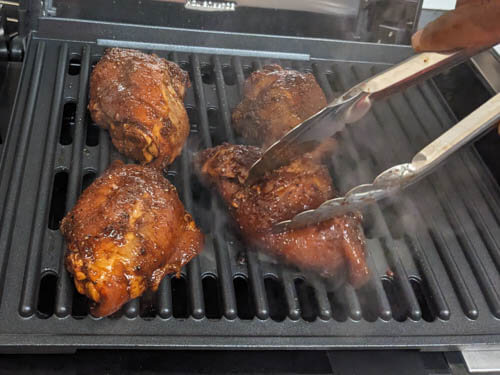Pulehu chicken is a mouthwatering Hawaiian grilled chicken dish with a deliciously smoky and savory flavor This traditional cooking technique produces juicy, tender chicken with a charred exterior and distinct island flavors
In this article, we will dive into everything you need to know about pulehu chicken. We will cover
- The definition and origins of pulehu chicken
- How it is prepared using a unique open-flame grilling method
- The classic ingredients used to make it
- Step-by-step instructions for making it at home
- How it differs from teriyaki chicken
- Creative variations and substitutions you can try
- Its importance in Hawaiian culture
So let’s get fired up and explore the savory world of pulehu chicken!
What Is Pulehu Chicken?
Pulehu chicken refers to chicken that is grilled or broiled over an open flame or hot coals, The term “pulehu” itself translates to “grilled” or “broiled” in the Hawaiian language
This cooking technique has been used for centuries in traditional Hawaiian cuisine. Chicken is typically marinated in a simple blend of ingredients before being cooked over a wood or charcoal fire.
The high, direct heat helps to seal in moisture while also imparting a delicious charred flavor and aroma. Pulehu chicken emerges juicy, smoky, and imbued with the sweet, salty, and umami notes of the marinade.
Understanding the Essence of Pulehu
So what makes pulehu chicken special compared to other grilled chicken dishes? It all comes down to the straightforward preparation method that allows the natural flavors of the chicken and marinade to shine.
-
Simplicity of the marinade – The marinade usually contains just a few key ingredients like soy sauce, garlic, ginger, salt, and black pepper. This lets the chicken take center stage.
-
Open-flame grilling – Cooking directly over hot coals or an open fire source results in a char that can’t be replicated on a regular grill.
-
Smoky flavor – The smoke from the fire penetrates the chicken skin, imparting a wonderful smoky essence. Hardwoods like mesquite are often used.
-
Crisp skin – The high heat crisps up the skin beautifully. Basting with oil helps further crisp and caramelize it.
-
Juicy meat – Quick cooking times prevent the lean chicken from drying out. The marinade also keeps it tender.
The Significance of the Fire
It’s clear that fire is absolutely essential to creating authentic pulehu chicken. But not just any cooking fire will do. There are a few things to keep in mind regarding the fire:
-
Fuel source – Hardwoods like mesquite, oak, and fruit woods are ideal for generating flavorful smoke. Avoid softwoods like pine. Lump charcoal also works very well.
-
High heat – The fire needs to burn hot, around 600-700°F at grill level. This ensures proper searing.
-
Coal base – For best results, build a base of hot coals to cook on rather than flames. Let the coals ash over before grilling.
-
Consistent heat – Try to maintain an even, consistent heat rather than fluctuating temperatures. This allows the chicken to cook evenly.
-
Wood chips – Adding soaked wood chips directly on the coals will increase smoke generation. Fruit woods like apple or cherry are nice complements.
Mastering fire management is essential for beautifully cooked pulehu chicken with that trademark smoky char.
Frequently Asked Questions (FAQs) about Pulehu Chicken
If you’re new to pulehu chicken, chances are you have some questions about how to make it and enjoy it properly. Here are answers to some of the most common FAQs:
FAQ 1: What is the primary difference between pulehu chicken and regular grilled chicken?
The main difference is the direct high-heat cooking method. Pulehu chicken is cooked directly over hot coals or an open fire, while regular grilled chicken is prepared over lower, indirect heat on a grate. This allows pulehu chicken to develop a unique char and smokiness.
FAQ 2: What are the essential ingredients for making pulehu chicken?
At its core, you just need chicken, kosher salt, black pepper, and a cooking fire. Some additional essentials are soy sauce, garlic, ginger, sesame oil, and wood chips. Keeping the marinade simple is key.
FAQ 3: Can I use any type of chicken for pulehu?
Bone-in, skin-on chicken legs and thighs are ideal. Breast meat tends to dry out. You want the bone for flavor and fat for moisture.
FAQ 4: What kind of wood is best for creating the smoky flavor in pulehu chicken?
Mesquite is the classic Hawaiian wood for pulehu chicken. But fruit woods like apple and cherry also impart mild, fruity smoke notes. Stay away from soft resinous woods.
FAQ 5: How do I build the perfect pulehu fire?
Start with a tall mound of lump charcoal. Once the coals are covered in ash, spread them out evenly. Let them burn for 30 minutes at around 650°F. Then start grilling.
FAQ 6: How long does it take to cook pulehu chicken?
Bone-in chicken legs and thighs take 15-25 minutes, turning occasionally. Boneless pieces take less time. Use a thermometer to ensure 165°F internal temp.
FAQ 7: How do I prevent the chicken from burning when cooking directly on the coals?
Use a wire grate to keep the chicken just above the coals. Rotate pieces every few minutes if flare-ups occur. Mist with oil to prevent sticking.
FAQ 8: Can I use a gas grill to make pulehu chicken?
Yes, use a cast iron skillet on the grates to mimic the effect of cooking directly over coals. Add hardwood chips to the smoker box for extra smoke.
FAQ 9: What are some popular variations on the traditional pulehu chicken recipe?
Some twists include using teriyaki, garlic-ginger, or citrus-herb marinades. Brushing on a glaze towards the end of grilling is also delicious.
FAQ 10: What are some side dishes that pair well with pulehu chicken?
Classic pairings include macaroni salad, rice, grilled vegetables, and tropical fruit like pineapple and mango. Aloha!
Pulehu Chicken vs. Teriyaki Chicken
Since teriyaki chicken is another popular Hawaiian grilled chicken dish, it’s common for people to confuse it with pulehu chicken. But there are some important differences between these two recipes:
-
Pulehu uses a simple soy sauce and seasoning marinade applied before grilling. Teriyaki relies on a sweet sauce glaze basted on during grilling.
-
Pulehu develops smoky, savory flavors from open-flame grilling. Teriyaki gets its flavor from the sticky teriyaki sauce mix of soy sauce, mirin, sake, and sugar.
-
Pulehu uses mostly thigh or leg pieces. Teriyaki works well with either thighs or chicken breast.
-
Pulehu uses little to no sugar. Teriyaki depends heavily on sugar in the sauce recipe.
-
Pulehu aims for a charred exterior and juicy interior. Teriyaki results in a lacquered glaze coating the chicken.
While both have their merits, pulehu chicken focuses more on enhancing the natural flavor of the chicken itself thanks to its simple preparation.
Variations and Substitutions for Pulehu Chicken
One of the great things about pulehu chicken is how versatile it is when it comes to experimenting with flavors. Here are some ideas for variations:
-
Change up the marinade ingredients – try lemongrass, five-spice powder, miso paste, hoisin sauce, etc.
-
Use alternative cooking fats – bacon grease, duck fat, and clarified butter offer richer flavors.
-
Glaze the chicken during the last 5 minutes – honey, agave, brown sugar, teriyaki, etc. make delicious glazes.
-
Stuff herbs under the skin – try thyme, rosemary, sage, etc. for infused flavors.
-
Skewer bite-sized pieces – great for pick-up appetizers.
You can also substitute boneless, skinless chicken breasts for a leaner version, though the texture won’t be quite as moist. For non-chicken alternatives, shrimp, steak, and tofu all work well.
The Cultural Significance of Pulehu Chicken
Pulehu chicken isn’t just a delicious Hawaiian dish – it has great cultural importance as well. Here are some of the reasons this cooking style remains an integral part of Hawaiian cuisine and gatherings:
-
It dates back centuries as a traditional cooking method used across the islands.
-
The simple preparation and cooking over a fire pit represents connection to the land and community.
-
Gathering around a fire or imu (underground oven) to pulehu food is a social tradition.
-
The dish emphasizes use of natural, local ingredients with little waste.
-
For Hawaiians, pulehu cooking brings people together through food and celebrations.
-
The smoky, salty flavors are nostalgic tastes of the islands.
From backyard luaus to family dinner tables, pulehu chicken is bound to Hawaiian identity through its storied history, communal heritage, and unforgettable flavors.
So there you have it – everything you need to know about mastering delicious and authentic pulehu chicken. This Hawaiian classic deserves a spot in every griller’s repertoire. The smoky, charred flavors you can only achieve from open-flame cooking are truly unrivaled.
Pulehu chicken also happens to be easy for weeknight meals since it requires minimal prep time. So fire up those coals, grab some fresh chicken thighs, and let the aroma of aloha guide you. All it takes is a simple marinade, a hot fire, and a spirit of adventure to make this taste of the islands right in your backyard.

Ingredients for Pulehu Chicken
Find the full ingredient list and full recipe in the recipe card below.
Chicken: Choose boneless, skinless chicken pieces. I prefer boneless skinless chicken thighs. They are super juicy and stay tender when even when cooking over high heat.
Soy Sauce*: Provides a savory, umami base for the marinade. You can also use coconut aminos* in its place.
Ginger: Fresh ginger adds a refreshing and spicy note to the marinade.
Garlic: Infuses the chicken with aromatic and bold flavors. I prefer fresh garlic but you can use garlic powder as well
Black Pepper: Adds a subtle heat and depth of flavor
Sea Salt*: Enhances the overall taste and helps to tenderize the chicken.
Brown Sugar*: Balances the savory elements with a touch of sweetness.
Sesame Oil*: Enhances the overall richness and nuttiness of the marinade. You can use regular vegetable or canola oil in its place if you prefer a neutral-tasting oil.
Lime Juice: Adds a zesty and tangy kick that brightens the flavors.
In a bowl, combine the marinade ingredients – soy sauce, ginger, garlic, brown sugar, sesame oil, lime juice, black pepper, and sea salt. Mix well to create a flavorful marinade.
Place the boneless, skinless chicken thighs in a resealable plastic bag or a shallow dish. Pour the marinade over the chicken.
A small bowl of marinade can be set aside for basting later.

Coat the chicken well. Massage the chicken gently to evenly distribute the marinade. Seal the bag or cover the dish and refrigerate the chicken.
Let it marinate for at least 1 hour, or preferably overnight. This allows the flavors to penetrate the meat and enhances its tenderness.
Preheat your grill to medium-high heat, around 375°F to 400°F (190°C to 204°C). Ensure the grates are well-oiled to prevent sticking.
Remove the chicken from the marinade, allowing any excess marinade to drip off. Place the chicken on the preheated grill.

Cook the chicken for about 6-8 minutes per side. Flip the chicken only once during cooking to achieve a caramelized exterior.
Use a meat thermometer* to check the internal temperature of the chicken. Once the temperature reaches 165°F (75°C), it is safe for consumption.
Do you need a Grill for this Recipe?
Yes, you will need a traditional or indoor grill* to prepare Pulehu Chicken. The traditional grilling technique is an essential part of achieving the delicious caramelized exterior.
However, if you don’t have access to a grill, you can still make this recipe.
Use a stovetop grill pan* or broil the chicken in the oven to achieve similar results.
It won’t technically be “pulehu”. But you can still enjoy this recipe with these alternative cooking methods.
